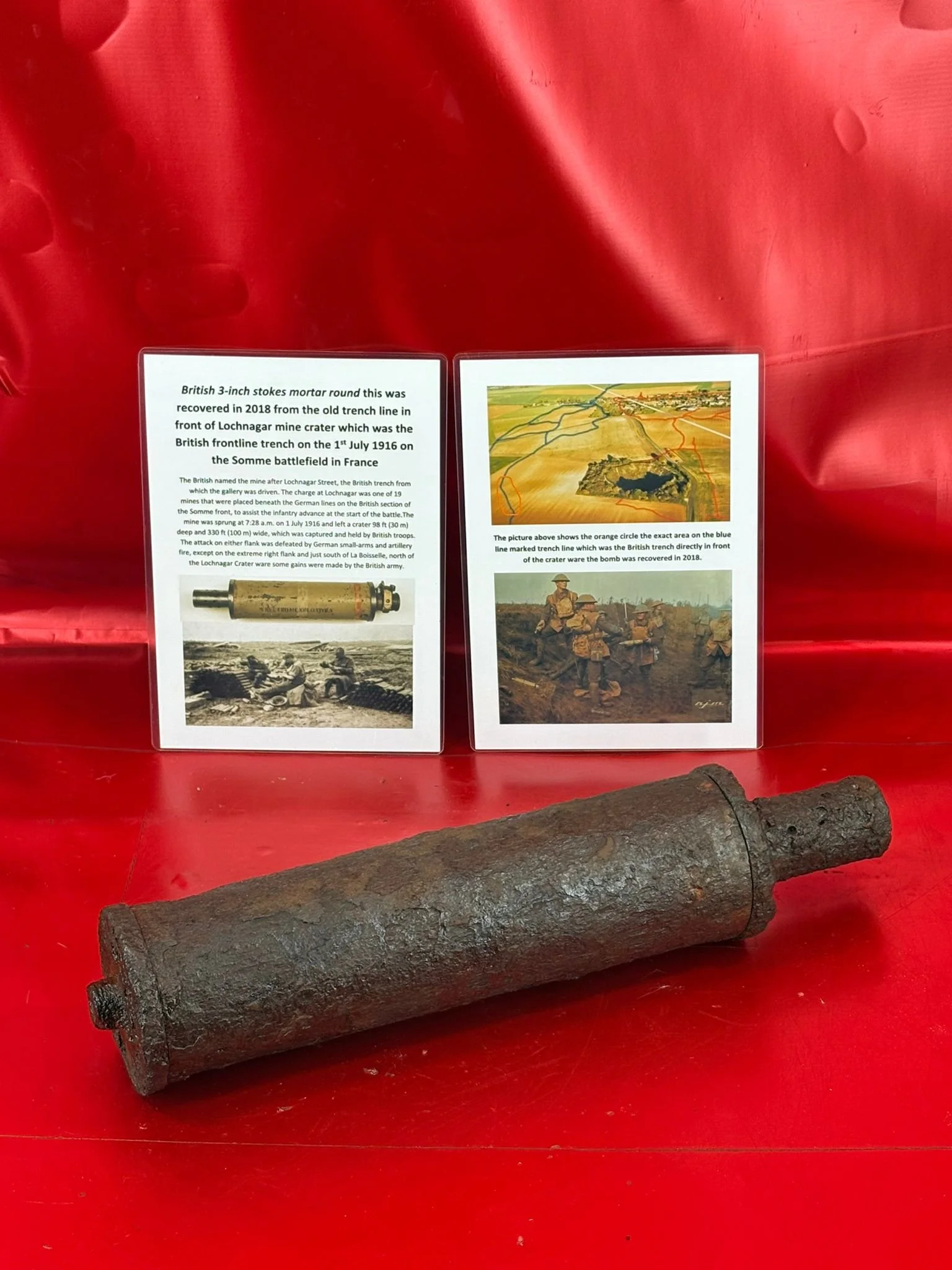 Image 1 of 9
Image 1 of 9

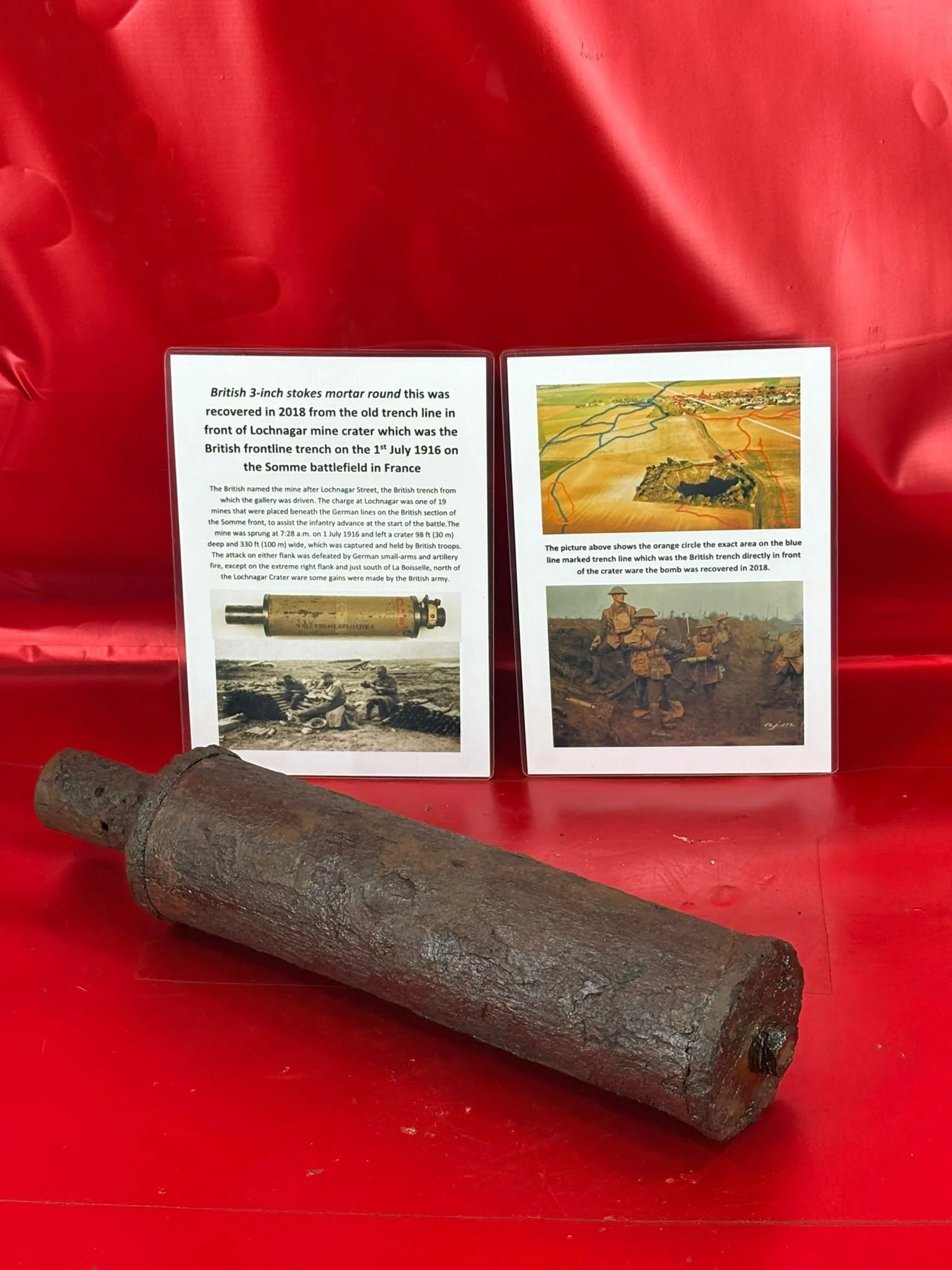 Image 2 of 9
Image 2 of 9

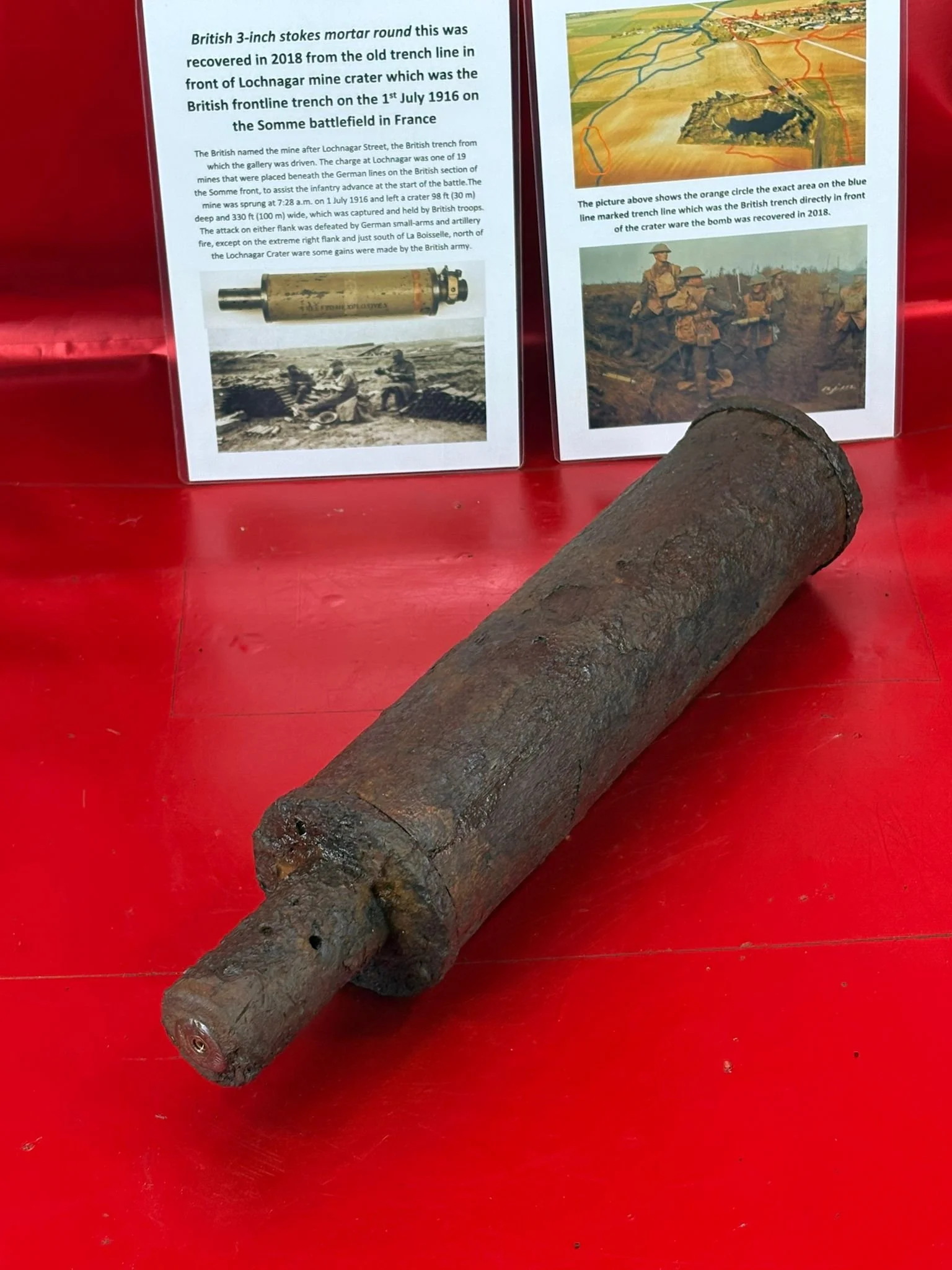 Image 3 of 9
Image 3 of 9

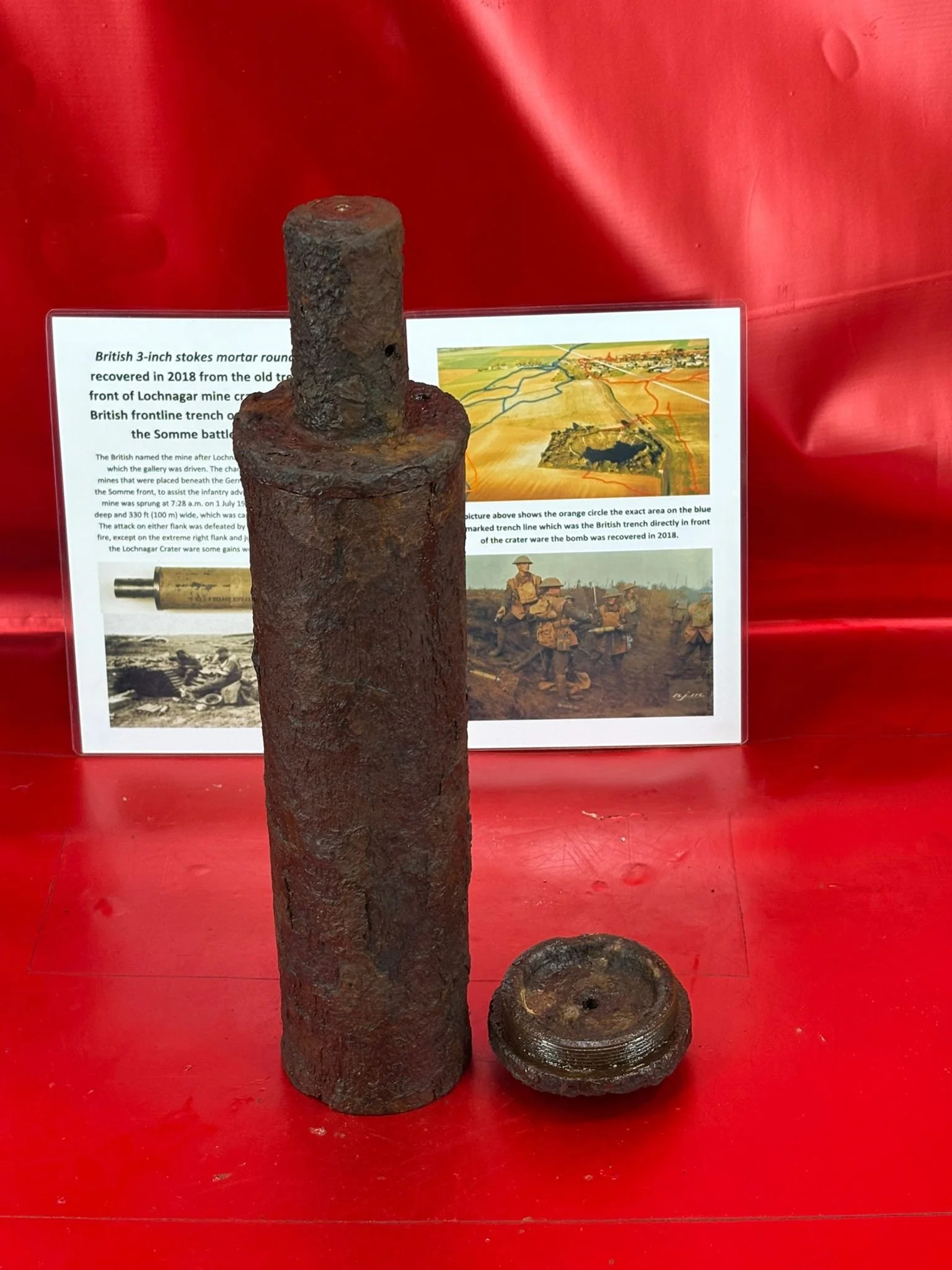 Image 4 of 9
Image 4 of 9

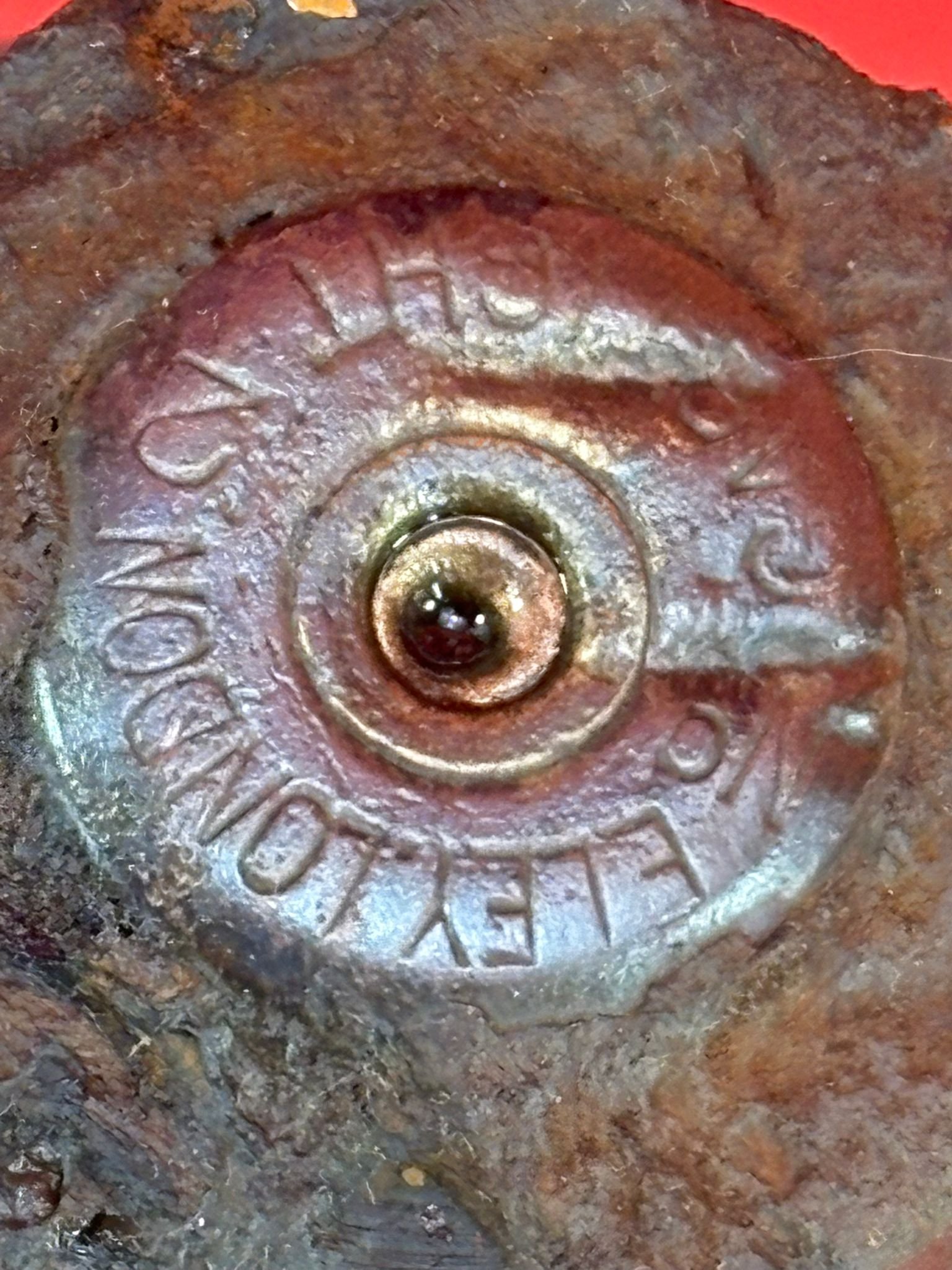 Image 5 of 9
Image 5 of 9

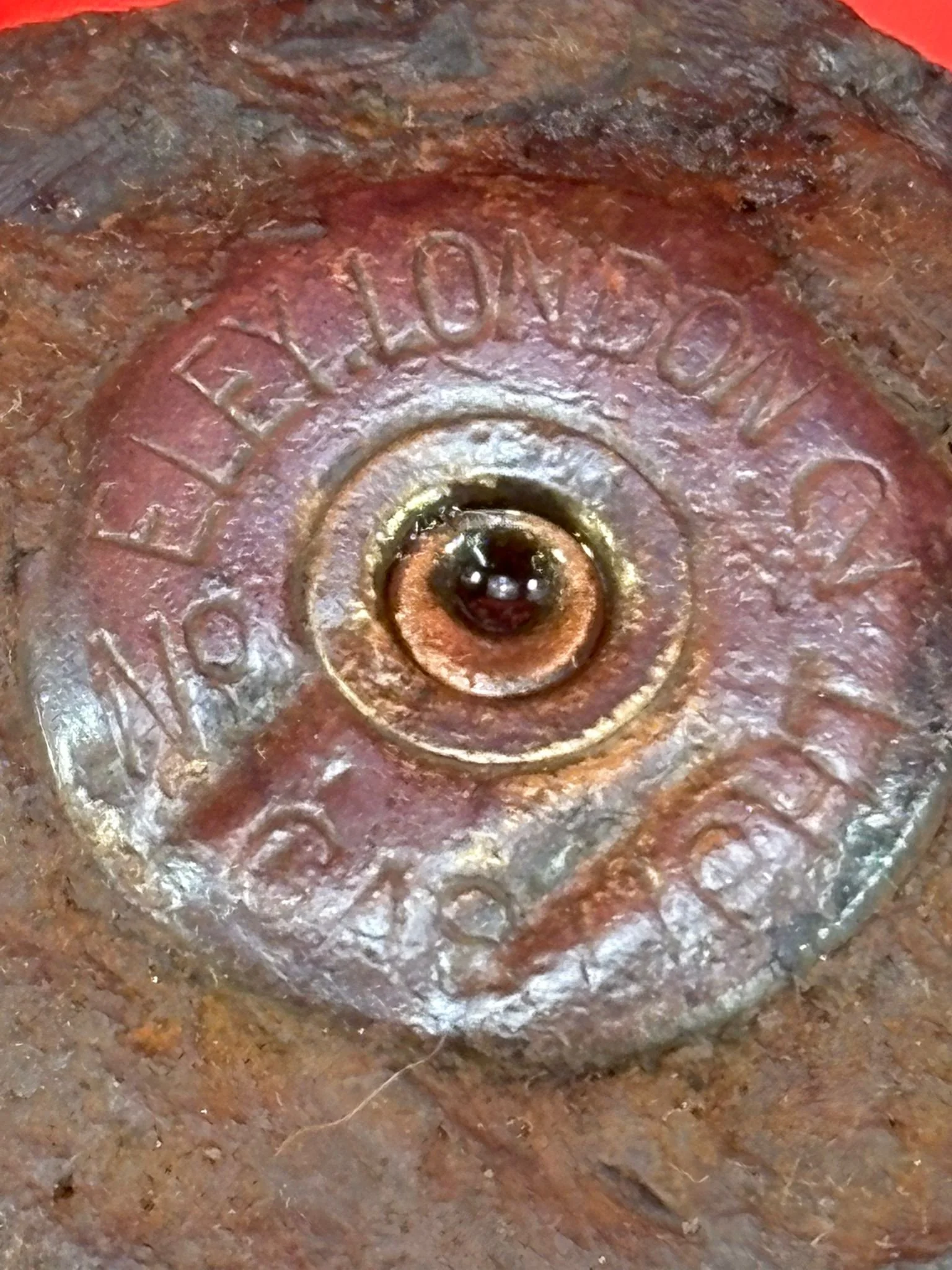 Image 6 of 9
Image 6 of 9

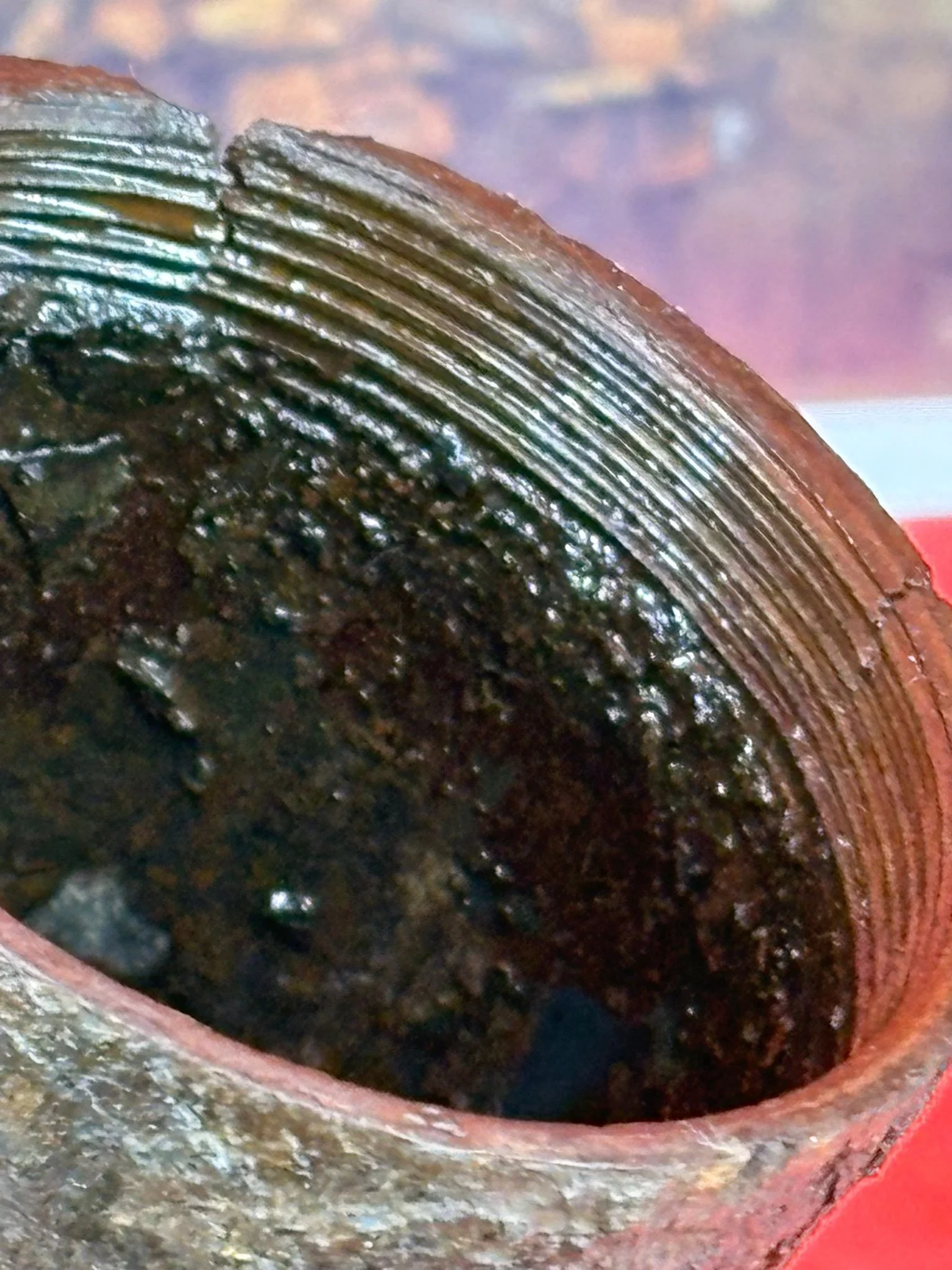 Image 7 of 9
Image 7 of 9

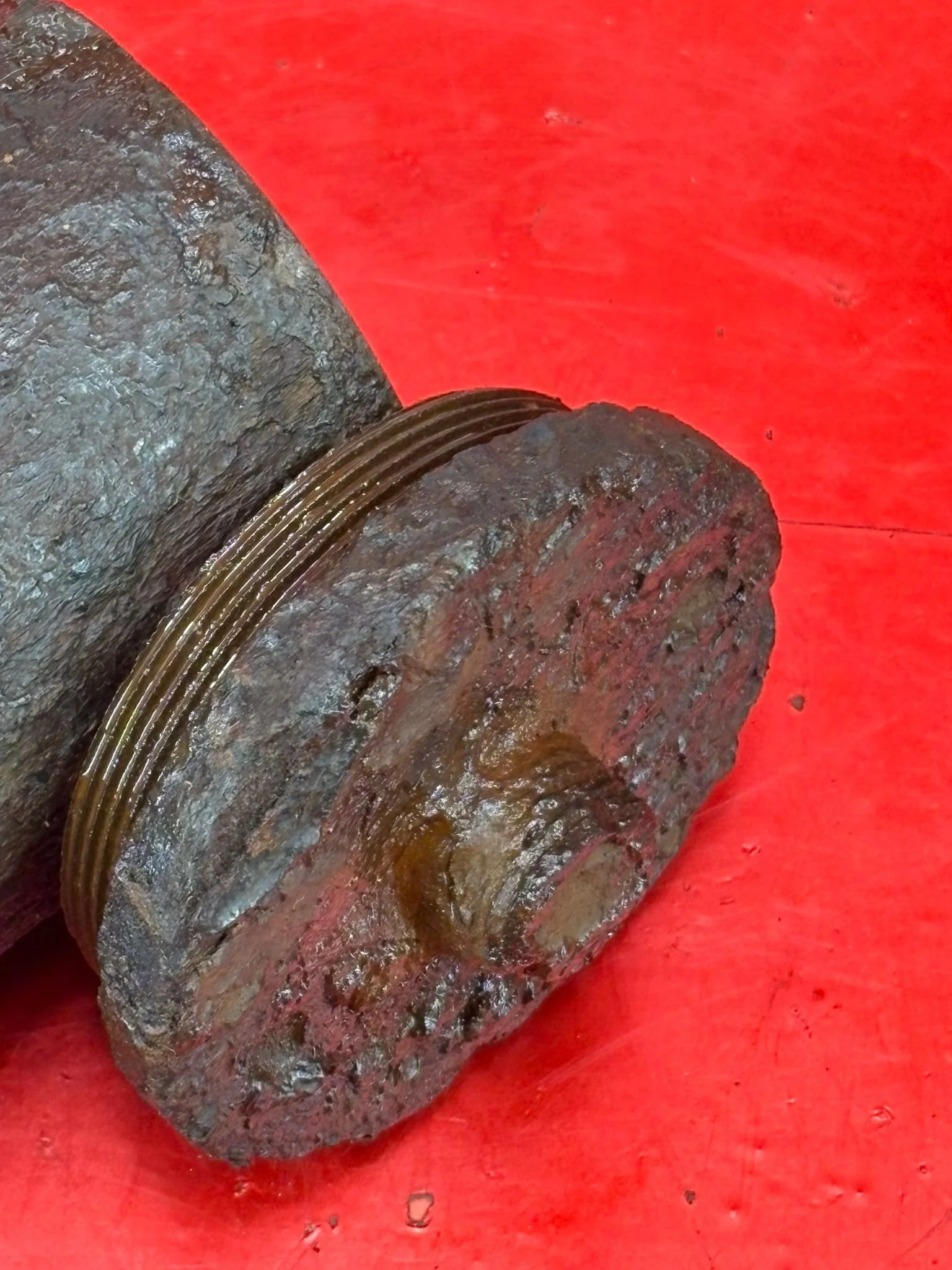 Image 8 of 9
Image 8 of 9

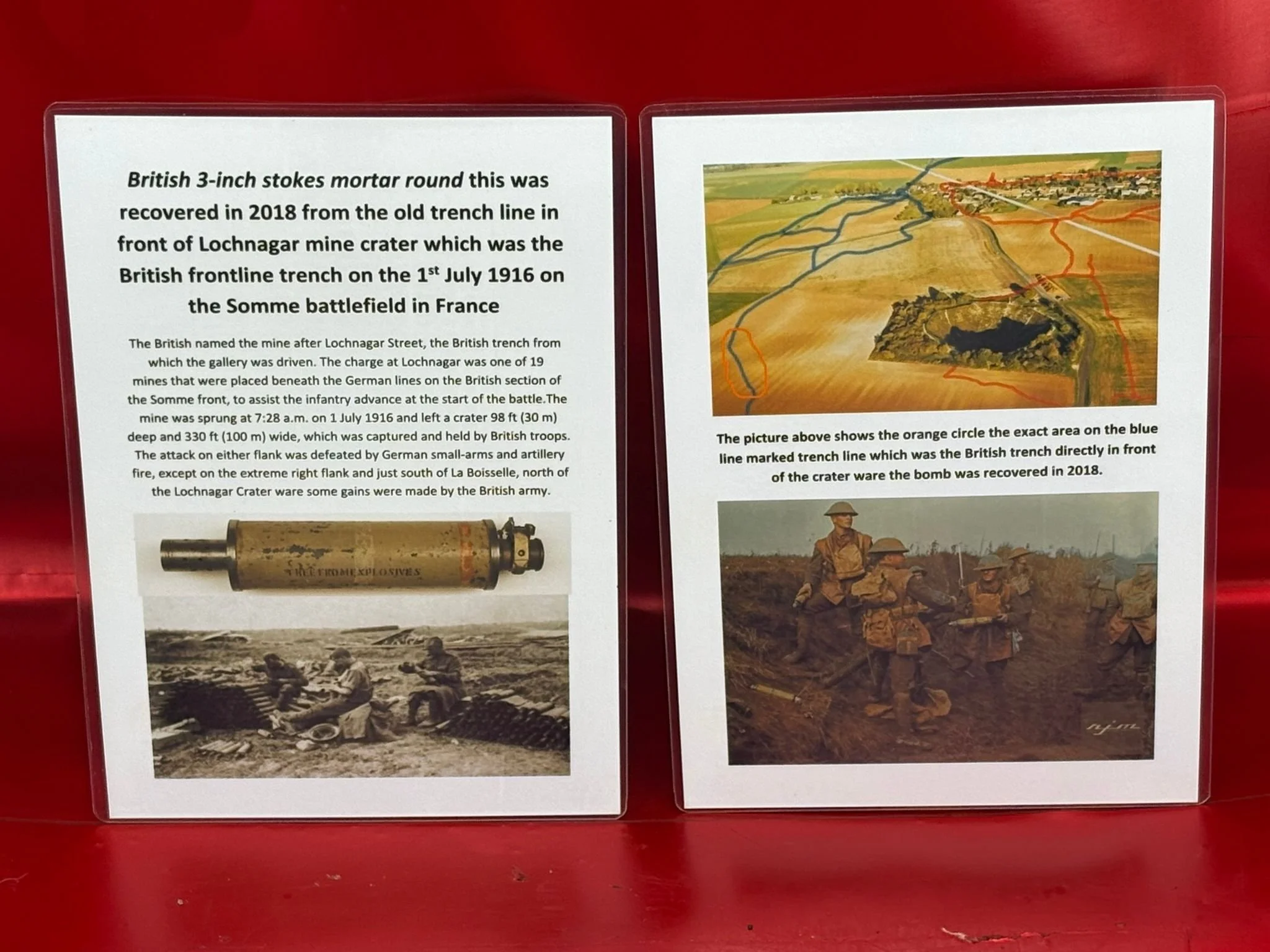 Image 9 of 9
Image 9 of 9










British 3 inch stokes mortar bomb, near complete nice relic condition recovered from the old trench line in front of Lochnagar mine crater, 1st July 1916 Somme battlefield.
This is a British 3-inch Stokes mortar round (or bomb) in remarkably good condition for a battlefield relic. Both the top and bottom plates are there and screw in and out nicely, and the mortar is completely empty and inert, making it safe for display. The mortar is relic but is very solid with some pitting but no holes, and retains some of its original interior coloring as well as some faint remains of original black paint on the exterior. On the primer base the brass still retains its original colour and has clear to see maker markings.The piece has been thoroughly and carefully cleaned, making it a rare example of a Stokes mortar bomb in such preserved condition especially one recovered directly from the battlefield. This would make a standout addition to any militaria collection or historical display.
This mortar bomb was recovered in 2018 from the old trench line in front of Lochnagar mine crater which was the British frontline trench on the 1st July 1916 on the Somme battlefield in France. The mortar comes with 2x A5 laminated information cards with map showing precise location they were found.
The British named the mine after Lochnagar Street, the British trench from which the gallery was driven. The charge at Lochnagar was one of 19 mines that were placed beneath the German lines on the British section of the Somme front, to assist the infantry advance at the start of the battle.The mine was sprung at 7:28 a.m. on 1 July 1916 and left a crater 98 ft (30 m) deep and 330 ft (100 m) wide, which was captured and held by British troops. The attack on either flank was defeated by German small-arms and artillery fire, except on the extreme right flank and just south of La Boisselle, north of the Lochnagar Crater ware some gains were made by the British army.
This is a British 3-inch Stokes mortar round (or bomb) in remarkably good condition for a battlefield relic. Both the top and bottom plates are there and screw in and out nicely, and the mortar is completely empty and inert, making it safe for display. The mortar is relic but is very solid with some pitting but no holes, and retains some of its original interior coloring as well as some faint remains of original black paint on the exterior. On the primer base the brass still retains its original colour and has clear to see maker markings.The piece has been thoroughly and carefully cleaned, making it a rare example of a Stokes mortar bomb in such preserved condition especially one recovered directly from the battlefield. This would make a standout addition to any militaria collection or historical display.
This mortar bomb was recovered in 2018 from the old trench line in front of Lochnagar mine crater which was the British frontline trench on the 1st July 1916 on the Somme battlefield in France. The mortar comes with 2x A5 laminated information cards with map showing precise location they were found.
The British named the mine after Lochnagar Street, the British trench from which the gallery was driven. The charge at Lochnagar was one of 19 mines that were placed beneath the German lines on the British section of the Somme front, to assist the infantry advance at the start of the battle.The mine was sprung at 7:28 a.m. on 1 July 1916 and left a crater 98 ft (30 m) deep and 330 ft (100 m) wide, which was captured and held by British troops. The attack on either flank was defeated by German small-arms and artillery fire, except on the extreme right flank and just south of La Boisselle, north of the Lochnagar Crater ware some gains were made by the British army.
